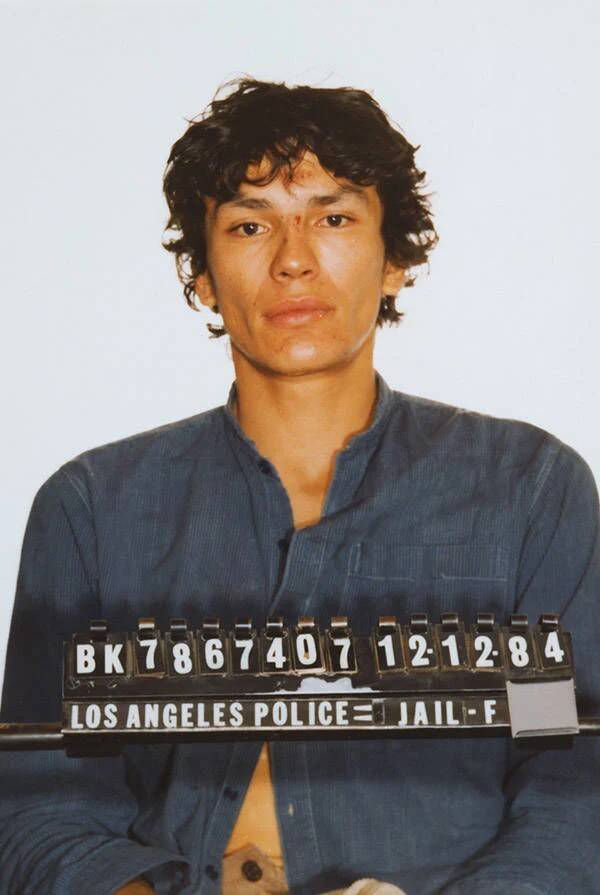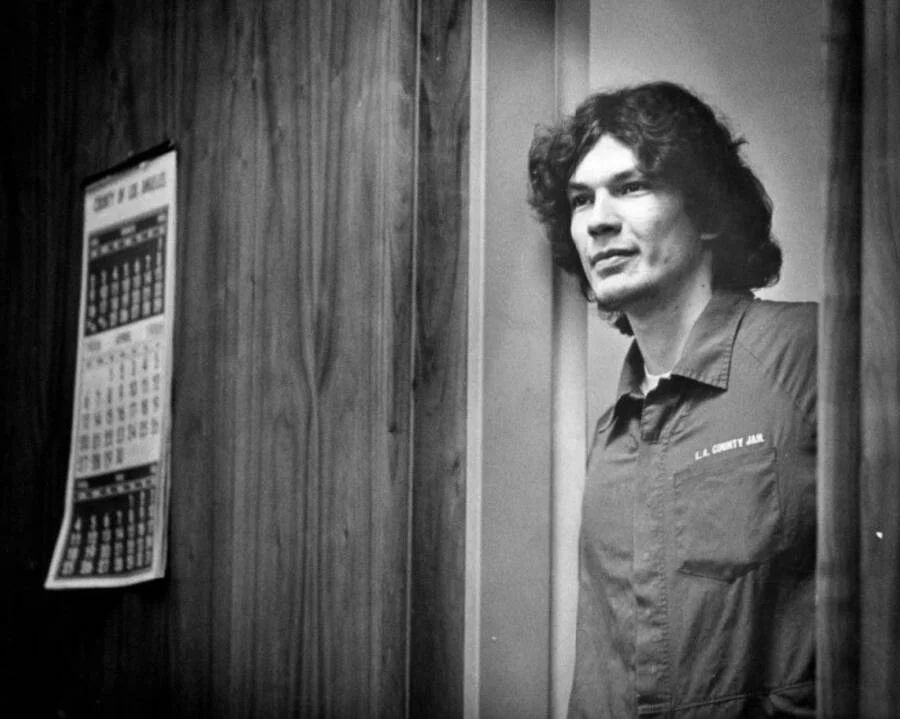Richard Ramirez. Even the name sends a chill down the spine. A man whose face haunted news broadcasts in the mid-1980s as California reeled from his reign of terror. But this wasn’t some fleeting criminal. No, Ramirez left a trail of blood, horror, and heartbreak, earning him the moniker, the “Night Stalker.” And while many anticipated his death would come in an execution chamber, fate had other plans.
Richard Ramirez died quietly, of all things. B-cell lymphoma took him out in 2013, while he sat on death row, waiting for an execution that never arrived. A stark contrast to the carnage he unleashed, this is the story of how the Night Stalker met his end and why, for many, it wasn’t the justice they craved.
The Nightmare Begins: How Richard Ramirez Terrorized California
The tale of Richard Ramirez is one drenched in blood and depravity. Born on February 29, 1960, in El Paso, Texas, his early life read like a perfect storm brewing. His father, known for his temper, reportedly beat him. On top of that, young Richard suffered serious head injuries—including one when a dresser fell on him—that resulted in epilepsy by age five. Like a villain in a dark comic, his childhood only got worse from there.
But it wasn’t just family troubles. Ramirez had another twisted influence: his cousin Miguel, a Vietnam vet who filled the boy’s mind with graphic tales of torture, even showing him photos of his exploits. By age 13, Richard had already witnessed Miguel murder his own wife. The psychological damage was done, and soon, Ramirez would bring that violence to the streets of California.
By April 1984, he’d started his killing spree, one that would mark him as one of the most unpredictable and horrifying serial killers the state had ever seen. The “Night Stalker” didn’t have a type. He murdered men, women, and children alike, spanning all ages. He didn’t care about location either, leaving his bloodstained mark in both Northern and Southern California. Guns, knives, brute strength—Ramirez used whatever was on hand. Some victims were tortured and left alive. Others were raped, their eyes gouged out. Many were forced to “swear to Satan” before he took their lives.
By August 1985, Ramirez had killed at least 14 people and attacked countless more. His mugshot became a symbol of fear as his decaying teeth were reported by witnesses, and soon, a vigilante mob in Los Angeles recognized him. In a chaotic moment of street justice, they beat him before police arrived and took him into custody.
The Trial That Shocked the World
Ramirez’s trial in 1989 was nothing short of a media circus. Found guilty on 43 counts, including murder, sexual assault, and burglary, the Night Stalker was sentenced to death. But in his true, twisted style, he seemed unfazed. “Big deal, death always comes with the territory,” he said with a smirk. “I’ll see you in Disneyland.”
The brutality of his crimes had left a permanent mark on his victims’ families, but justice, it seemed, would be delayed. Instead of a quick execution, Ramirez languished on death row for years, using every appeal he could to delay the inevitable. His notoriety even attracted a bizarre fandom, including Doreen Lioy, a former editor, who married him in 1996 while he was still incarcerated.
But his bizarre marriage didn’t last. By 2009, Ramirez had been linked to even more crimes, including the rape and murder of a nine-year-old girl in San Francisco. With his monstrous past growing even darker, it seemed his infamy would continue to haunt California for years to come.

Richard Ramirez’s Death: An Unexpected Quiet End
Ramirez was supposed to die in the gas chamber. That was the plan. But instead, time dragged on, and his health deteriorated. By 2013, at the age of 53, the Night Stalker’s violent days were far behind him, replaced by the silent horror of cancer.
Read more: Israel and Hezbollah Battle in Southern Lebanon: Ground Invasion Intensifies
On June 7, 2013, Richard Ramirez died at Marin General Hospital, where he had been transferred from San Quentin for liver failure treatment. His body, reportedly in terrible condition from years of chronic substance abuse and hepatitis C, had finally given up. A source even described his skin as having turned green, like something out of a horror film—a fitting end for the man who’d once terrorized so many.
But as the news of his death spread, the expected sense of justice was nowhere to be found. For many, his passing in a hospital bed felt like a cheat, a cruel twist in a story that had already taken so much from them.
The Reactions: Was Justice Served?
For the surviving victims of Richard Ramirez, his quiet death in a hospital was a slap in the face. Bill Carns, who was left partially paralyzed after Ramirez shot him three times and raped his girlfriend, didn’t mince words. “It’s about time,” he told the Los Angeles Times after hearing of Ramirez’s death. “He should have been put to death an awful long time ago.”
Sakina Abowath, another survivor whose husband had been murdered by Ramirez while their two sons slept in the same house, echoed that sentiment. “I wish that they would have hanged him,” she said. “I never forget. It’s been exactly 28 years.”
But not everyone saw things that way. Some prosecutors felt that Ramirez’s years in prison were punishment enough. “He hurt many people, and our thoughts should be with the next of kin and survivors,” L.A. Deputy District Attorney Alan Yochelson said. “Some measure of justice has been achieved.”
A Final Verdict: How the Night Stalker’s Death Leaves a Bitter Taste
In the end, Richard Ramirez’s death did not deliver the catharsis his victims had longed for. His final years behind bars and quiet death in a hospital bed felt like an anti-climax to a story that deserved a harsher ending. Yet, even in death, Ramirez managed to leave a legacy of pain and controversy, proving that justice is often imperfect, especially when dealing with a monster like the Night Stalker.
For now, the chapter on Richard Ramirez is closed. But the scars he left behind on the families of his victims—and on the state of California—will never fully heal.

